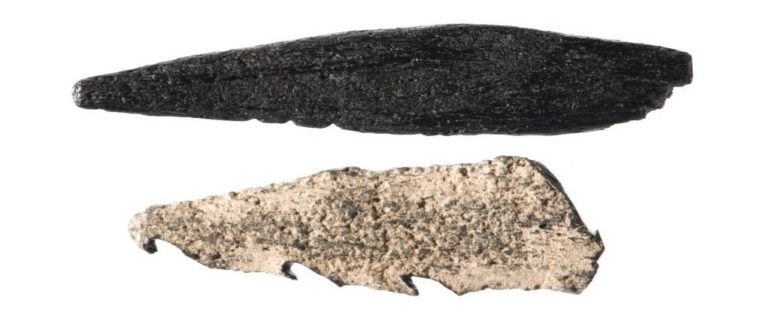In the ancient past, Europe was a very different place – once upon a time, Britain was yet tethered to the European continent.
Only millennia later, when that connection had long been severed, did modern humans start to rediscover ancient artefacts of stone age peoples that once dwelled in lands now hidden below the waves.
One of these lost realms – called Doggerland – lay in between Britain and the Netherlands, and its existence today is revealed in countless cultural objects that wash up along the shorelines of Dutch beaches.
Among these artefacts, numerous barbed points carved from bone have long been thought to be a form of weapon used by Mesolithic hunger-gatherers inhabiting Doggerland or its surrounds as far back as 11,000 years ago.
“We are quite sure they are projectile points,” archaeologist Joannes Dekker from Leiden University in the Netherlands told New Scientist, pointing out that the barbed points, which likely adorned arrows or perhaps spears, indicate signs of active use as weapons or tools, not as ceremonial items.
“They have been resharpened. They show use-wear.”
But that’s not all. In a new study led by Dekker, researchers analysed 10 of the barbed points collected from the Dutch North Sea coast, using mass spectrometry and a technique called collagen peptide mass fingerprinting (aka ZooMS).
While it’s never been known what kind of bone was used for the weapons, the researchers still got a surprise when the results came in, showing human bone was used for two of the barbed points, with the rest mostly being carved from the bones of ancient red deer (Cervus elaphus).
The researchers contend that the prominent use of red deer bones may simply reflect the availability of the species to the ancient hunter-gatherers.
However, other species including aurochs (Bos primigenius), roe deer (Capreolus capreolus) and wild boar (Sus scrofa), should also have been easy to source, and their bones or antlers would have been equally suitable from a biomechanical perspective, if not more so.
“This was not an economic decision,” Dekker explained to Smithsonian Magazine. “There must have been some other reason, a cultural reason, why it was important to use these species.”
That’s especially so for the human bones, which is even more puzzling.
“Ethnographic data on hunter-gatherers, who employ an immediate return foraging style, show that the amount of animal resources exploited is several orders of magnitude higher than the biomass of the hunter-gathers themselves,” the authors write in their paper.
“In other words, human bones ordinarily compose only a minuscule fraction of the total amount of bones available to hunter-gatherers… Therefore, it is reasonable to assume that opportunistic selection for human bone is highly unlikely.”
What then can explain the intentional use of human bones by the ancient hunters of Doggerland?
There’s no way we can know for sure, but the researchers hypothesise that the use of the red deer bones could have reflected some form of culture-specific meaning or symbolism attributed to the species.
Likewise, the human bone points could have served ritualistic purposes, representing a kind of mortuary practice – one where “human remains are transformed into weapons”.
Doggerland’s tides may have been rising, but the hunt lasts forever in the afterlife.
The findings are reported in Journal of Archaeological Science: Reports.



